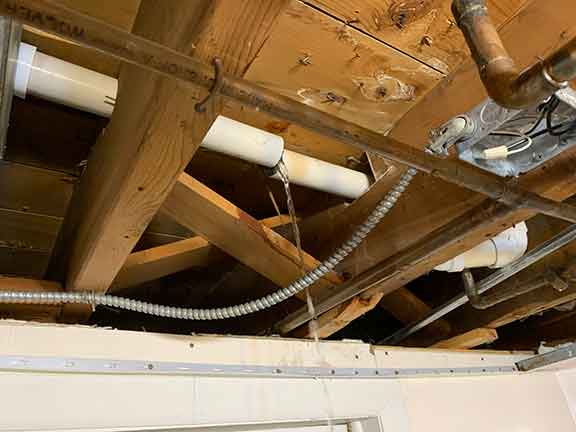
Clean water is delivered straight to your home and readily available whenever needed. That has to be one of the greatest conveniences of modern life. Unlike people who lived less than one hundred years ago, we do not have to fetch water from a well or nearby river and store it in containers inside the home for later use.
Instead, vast networks of pipes crisscross our cities to carry water from treatment plants to our doorstep. From that point, another network of pipes distributes the clean water to the appliances and faucets inside the home. The invention of modern plumbing surely ranks as one of the greatest innovations of all time.
But as good as modern plumbing systems are, they are not without problems, warns Foothills Properties Management & Realty. The number one issue with plumbing systems is that they tend to leak. Plumbing systems have hundreds of connections, and each one has the potential to spring a leak. That is why yearly, around 1 trillion gallons of water are wasted through home plumbing leaks.
Every drop of water leaking from a plumbing system costs homeowners money. In one year, this cost can amount to hundreds of dollars. But this is not the only consequence of a burst pipe inside the house. By far, the greatest cost of a plumbing leak is the damage out-of-control water can cause to the physical structures of the home.
That is why 1 in 60 insured homes will file for water damage in any given year, and 20% of all insurance claims are connected to water damage. The result is that of the $10 billion worth of insurance payouts made every single year by insurance companies, damage by leaking pipes contributes a huge portion. So, how exactly do leaking pipes damage your home?
How leaking pipes damage your home
Water pipes leak for several reasons, aging plumbing systems, corrosion, sedimentation inside pipes, sudden temperature changes, loose fittings and connections, excessive water pressure, and much more.
When a water pipe leaks, the water inside the pipe is released into the surrounding environment and can cause three kinds of damage.
Damage to the contents of the home
By far, the least-devastating damage caused by a leaking pipe is when the water destroys the content of the house. This happens when items like carpets, clothes, paintings, or furniture stand in the path of running water and get soaked as a result. As costly as this damage is, it is minor compared to the other ways water can damage your home.
Pipe leaks leading to cosmetic damage
Water from a leaking pipe can significantly damage the home’s appearance. If the leaking pipe is hidden behind a wall and the leak is not detected, the wall can become discolored as a result.
Water can also cause wall paint to start to bubble, peel, or flake. It can make the wallpaper start to peel or warp. Leaking pipes can also cause the de-laminating of plywood and other materials in the home. All these will diminish the appeal of the home.
Pipe leaks leading to structural damage
By far, the worst effect of a leaking pipe is when the water attacks the physical structures of the house to either weaken or destroy them. This often happens when a pipe leak goes undetected for a long time. There is no limit to how much harm water can cause to the structural elements of the building.
If this problem is not addressed promptly, it can destroy the building. Examples of structural damage caused by leaking pipes include:
- Floorboard warping: This happens when water collects beneath the floorboards. The boards swell as a result and start to warp. This often manifests as bumps or lumps in the carpet or wood floors.
- Wood rot: If contact between water and the home’s wooden components persist, those components can start to rot. This can happen to doors, door jambs, floorboards, cabinets, roof structures, and other wooden features of the building.
- Damaged insulation: The insulation inside walls should always be kept dry. If water gets into the insulation, it loses its insulating properties and the ability of the HVAC to regulate the home’s temperature will be compromised.
- Drywall damage: Water can saturate the drywall to the point where it begins to bulge and sag. If the drywall and framing materials of the house are weakened, the entire ceiling or upper floors can collapse.
- Foundation damage: The greatest threat that water from a leaking pipe poses to a house is the threat of foundation damage. If water seeps into the foundation of the building, it can corrode the steel frames inside the foundation. If this happens, the foundation can start to crumble or break away.
To sum up, a seemingly minor issue like a tiny leak from a pipe is enough to destroy the entire structure of a building completely.